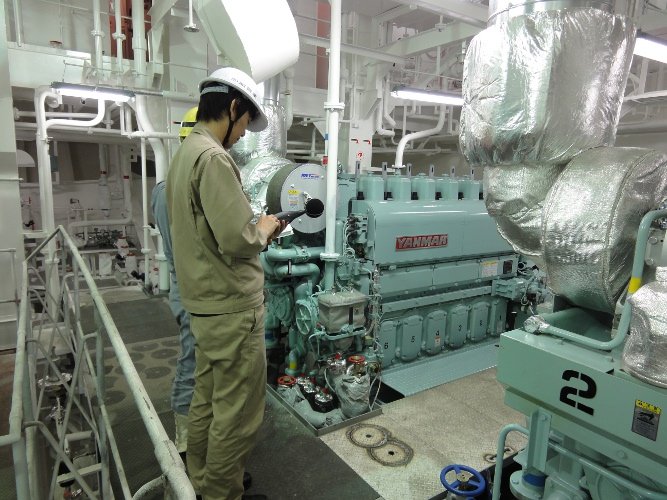News
Maritime projects predict and reduce noise on board ships
As ship-owners must ensure their vessels meet strict noise regulations, Tokai University initiated two projects intended to help engineers reduce and control noise on board during operation.
The latest regulation - International Maritime Organization (IMO) noise level code on board ships, which became mandatory for new ships on July 1st, 2014 - is to protect seafarers against hearing loss, improve comfort levels and make aware the need to communicate with colleagues and hear alarms. All ship-owners have to meet these regulations for vessels with a gross tonnage of 1,600 and over.
In April 2011, Tokai University’s Professor Shuri started working with Brüel & Kjær on a project for the cooperative association of Japanese shipbuilders. Professor Shuri said: “The aim of this project was to develop noise prediction programs for shipbuilding engineers. Our second project, which started in March 2015, is about developing noise control technology to effectively reduce noise levels in cabins.”
These projects – both completed in April this year - aimed to obtain a lot of accurate noise and vibration data during sea trials and to measure many acoustic properties, such as transmission loss of a cabin construction and the absorption coefficient of cabins.
“This data is necessary for the development of noise prediction programs and to verify noise control measures,” said Professor Shuri. “Shipbuilding engineers have measured noise and vibration data and acoustic properties on more than 30 ships using a Type 2250 Sound Level Meter and have used the building acoustics measurement system. We have obtained a lot of data, relying on technical support from the engineers at Brüel & Kjær Japan,” explains Professor Shuri.
“The Brüel & Kjær Type 2250 is popular among ship manufacturers as it measures both noise and vibration acceleration levels and this is very useful in order to investigate noise control measures,” explains Professor Shuri. “The Type 2250 with the building acoustics module can also carry out transmission loss measurements of a cabin construction and provide the absorption coefficient measurements in a cabin, which are necessary measurements when investigating noise control.”
Looking to the future, Professor Shuri believes that noise source identification technology is one of the most effective methods to reduce noise on ships: “To provide an effective method for engineers, I hope to develop practical usage rules for noise source identification in ship cabins during sea trials, in cooperation with engineers from Brüel & Kjær Japan.”
Read the full article on Brüel & Kjær’s website: http://www.bksv.com/NewsEvents/Waves/Articles/2016/all-quiet-on-board



